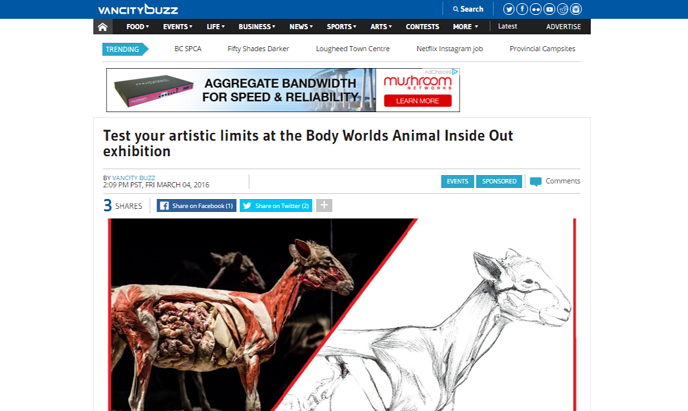You’ve come across all sorts of sponsored content in your journeys across the Internet, even if you’re not specifically aware that you’re looking at sponsored content. Every time you arrive on a website and see links to other articles “around the web,” you’ve been hit with some native advertising.
And while I have argued in the past that native advertising is good for everyone in the long run, that’s not the kind of sponsored content I’m talking about. Instead, I’m talking more about advertorials and other more “full length” sponsored content that takes on the form and structure of regular articles on your website.
When you partner with the right advertisers and the right companies, this can prove to be a very lucrative source of income for your website. Countless websites are already doing it. Here’s an example from Buzzfeed.

On the positive side, they’ve done a very good job at clearly indicating that this article is sponsored by Starbucks. They’ve also provided Starbucks with some good added value with the sidebar widgets promoting the coffee company’s social media accounts. And the listicle format is definitely the norm for a site like Buzzfeed.
Here’s another example from one of the most popular websites in Vancouver, Vancity Buzz.

The article highlights an upcoming event in Vancouver that may be of interest to readers and it’s written as if it were any other news article. It’s not until the very end of the post that you see a small (clickable) banner saying that the preceding was a paid advertorial. The banner also encourages other advertisers to contact the team at Vancity Buzz about creating similar content.
This is all par for the course and the issues surrounding transparency with native advertising will continue to be a point of discussion. But make no mistake. Native advertising is not only here to stay; it’s growing and it’s growing at an astronomical rate.
Whereas “only” an estimated $4.3 billion was spent in 2015, it’s projected that $8.8 billion will be spent in 2018. And that’s still only 5% of marketers’ spending.
Some publishers see the opportunity to make money through sponsored content and native advertising as just another revenue stream. They see it as only another payday. They throw together an article that meets the bare minimum for backlinks and keywords and call it a day. That’s not the approach you need to take. It may surprise you to learn that it is likely in your best interest to ensure that your sponsored content is superior to your regular content.
The reasons for this are two-fold. First, by having exceptional sponsored content that creates a win-win-win situation all around for the publisher, advertiser and reader alike, you become much more attractive to other potential advertisers who may be seeking similar partnerships. When you pitch another company, you can show what you’ve done in the past and how this created tremendous value for everyone. Past successes yield future opportunities.
The second reason relates back to the concerns over transparency. As a reader and a visitor of a blog, you expect a certain level of quality with the content that you read. If you make your way through the entirety of a piece only to learn at the end that it was really just one big ad, you might feel deceived. You might feel like you were lied to. You might feel cheated. You might develop a negative impression of that website.
If the piece itself was mediocre to begin with, you’ll feel like you just wasted your time reading something that wasn’t worth reading. And you might not come back.
On the other hand, if the article was entertaining, engaging, informative or otherwise enjoyable, it won’t matter that it was sponsored. You liked it and shared it anyhow. Advertorials and sponsored content don’t have to be simple “filler” for a website; they can become an integral part of the whole editorial process, a part that still provides real value to the reader while satisfying the objectives of the paid advertiser.
When you pitch a company (or get pitched by a company) to produce sponsored content for your website, think long and hard about how that content can be properly integrated into the overall vision and narrative of your site. It needs to align with your principles and the direction you want the site to take. It needs to be something that your readers will actually want and actually enjoy. And that’s better for your future advertisers too.
